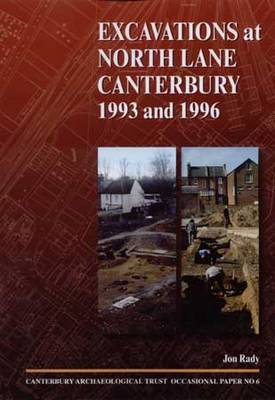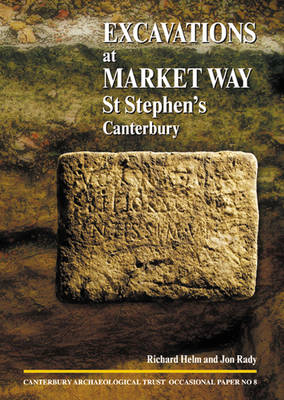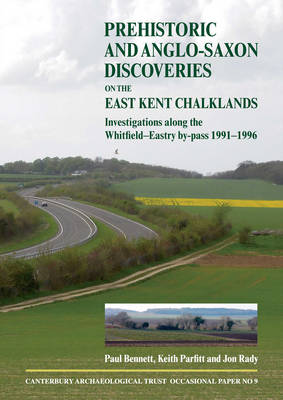CAT Occasional Paper
3 primary works
Book 6
Further evidence for the industrial nature of the northern extra-mural suburb of Canterbury from the Roman, through medieval and post-medieval periods, was discovered in excavations close to North Lane. Roman discoveries include quarries servicing the pottery and tile industry, a series of heavily-used roads and a late Roman road-side...Read more
Further evidence for the industrial nature of the northern extra-mural suburb of Canterbury from the Roman, through medieval and post-medieval periods, was discovered in excavations close to North Lane. Roman discoveries include quarries servicing the pottery and tile industry, a series of heavily-used roads and a late Roman road-side burial, possibly a family group. Medieval industrial and commercial activity to the rear of premises on North Lane is evident from the contents of pits and features of the period. A study of medieval plots and later boundaries suggests that the line of the Roman road was preserved in the local topography until relatively recent times.
Book 8
Excavations at Market Way, St Stephen's, Canterbury
by Richard Helm and Jon Rady
Published 1 December 2010
Number 8 in Canterbury Archaeological Trust's occasional paper series publishes further findings in Canterbury's northern suburbs, this time close to Roman pottery and tile kilns recorded during the relocation of the cattle market in the 1950s. The kilns were established in an existing agricultural landscape in the mid-1st century...Read more
Number 8 in Canterbury Archaeological Trust's occasional paper series publishes further findings in Canterbury's northern suburbs, this time close to Roman pottery and tile kilns recorded during the relocation of the cattle market in the 1950s. The kilns were established in an existing agricultural landscape in the mid-1st century AD and then after the tile and pottery industry declined at the end of the second century, the area was used for burial. One of the graves on the site contained a re-used inscribed funerary plaque. In the early 8th century a new settlement developed, with the characteristic sunken-featured structures and other domestic features.
Book 9
Prehistoric and Anglo-Saxon Discoveries on the East Kent Chalklands
by Paul Bennett, Keith Parfitt, and Jon Rady
Published 31 March 2014
This latest volume in Canterbury Archaeological Trust's Occasional Paper series describes discoveries along the route of the Whitfield-Eastry by-pass. An extensive programme of fieldwalking and evaluation investigated a number of sites: two sites were subject to full excavation. At Eastling Wood a prehistoric barrow proved to be the focus...Read more
This latest volume in Canterbury Archaeological Trust's Occasional Paper series describes discoveries along the route of the Whitfield-Eastry by-pass. An extensive programme of fieldwalking and evaluation investigated a number of sites: two sites were subject to full excavation. At Eastling Wood a prehistoric barrow proved to be the focus of burial and ritual from the late Neolithic until the late Iron Age. At Church Whitfield two successive Iron Age farmsteads and an Anglo-Saxon hamlet with at least two hall-houses were situated at the crossing point of two downland trackways - a crossroads that survived until the new road was pushed through in 1995.


